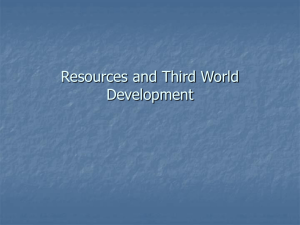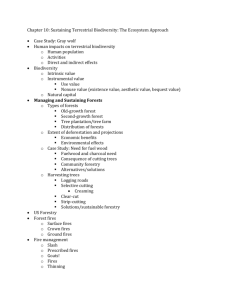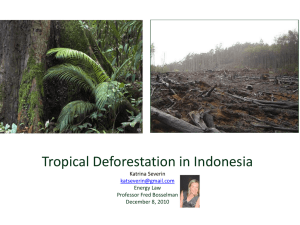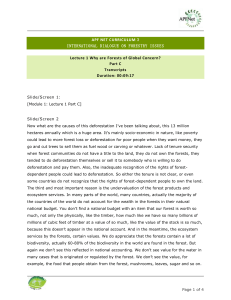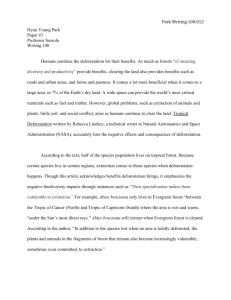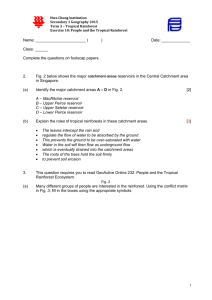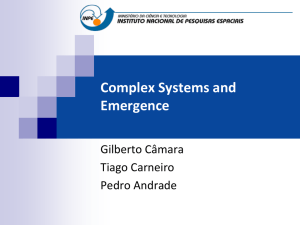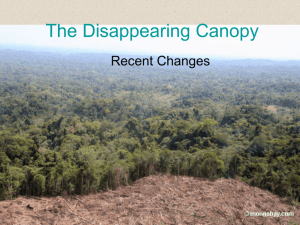PPT - Asian Judges Network on Environment (AJNE)
advertisement
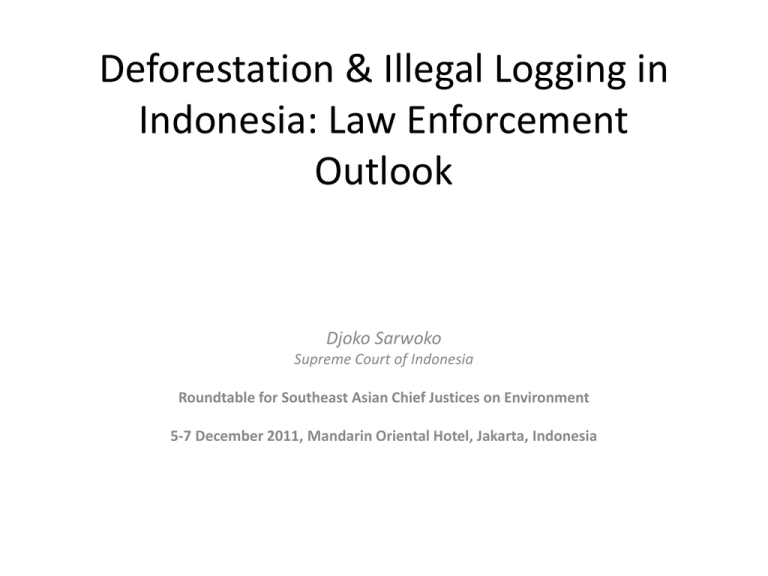
Deforestation & Illegal Logging in Indonesia: Law Enforcement Outlook Djoko Sarwoko Supreme Court of Indonesia Roundtable for Southeast Asian Chief Justices on Environment 5-7 December 2011, Mandarin Oriental Hotel, Jakarta, Indonesia Indonesia’s forest status: General Outlook Indonesia has a land area of 187,787 million ha with 132,399 million ha of forest areas and 55,388 million ha of other land use areas (APL) Deforestation levels: From 1985 – 1997, the average annual deforestation rate was 1.87 million ha.(Indonesian forestry statistics 2000). In 2000 – 2005, the figure fell again to 1.08 million ha a year. Meanwhile, during the 2003 – 2006 period, the deforestation rate rose again to 1.17 million ha annually (MoF 2009b). Based on this historical data, Indonesia’s deforestation rate is projected to be around 1.125 million ha annually, whereas average degradation caused by logging is 0.626 million ha annually (Draft National REDD Strategy, 2010). Deforestation: Contributing Activities with Figures No Drivers Status 1 Planned & Unplanned Forest Conversion 4,9 Million Ha (2010) Data from Ministry of Forestry (2009a and 2011) 2 Illegal Logging 73 – 80 % (UNEP 2007) Recent estimate: 40 – 50 % 3 Forest Fire 1999 – 2007 huge forest fires broke out in 2002 and devastated 35,496 ha 6793 Ha (2008) 4 Farming Land expansion 4 Million Ha (Forest Watch Indonesia 2001) Deforestation: Main Factors 1. Structural factor (orientation to economic growth which results to natural resources exploitation, including forest); 2. Substantive law: overlapping between substantive laws, multi interpretation of norms in substantive laws; unclear/overlapping of authority in administrative agencies 3. Insufficient law enforcement: capacity of law enforcement officials,, and coordination among enforcement officials; 4. Legal culture: weak participation & public control to law enforcement process and forest management. Deforestation: Law Enforcement Condition • Between 2008 – 2009: 92 cases of illegal logging had reached sentencing following appeal: < 1 year (24 cases), 1 – 2 years (19 cases), 3 – 5 years (5 cases), 6 – 10 years (8 cases), > 10 years (0 cases), freed (36 cases), life imprisonment (0 cases) and death sentence (0 cases). (Attorney General Office’s Annual report 2008-2009) • From 205 verdicts from 2005 – 2008, only 17.24% succeeded in sentencing the mastermind involved. Meanwhile, 137 (66.83%) were found not guilty, 44 (21.46%) were sentenced to less than one year, 14 (6.83%) 1-2 years, and 10 (4.88%) to more than 2 years. (ICW 2009) Lesson leaned from Cases No 1 Cases Bangkinang Case (1999) Substantive Issues • • Forest fire caused by company activity in Riau, Sumatera (a deliberate action caused by burning in an area of 2000 acres ) 2 years imprisonment for company and its director (the appeal court: 8 months) Lessons Learned • • the use of corporate liability principle The use of scientific evidence – involving scientific expert from the beginning of investigation’s process • The use of evidence that not previously recognized in the procedural law (Narrow interpretation of the provision) Forest case in Indonesia often link to corruption case (problem with using forestry law or corruption law in enforcement) 2 DL Sitorus Case (2007) The use of production forest without permission and use it for palm oil plantation activity • 3 Illegal Logging in Riau (2010) • Lack on common understanding in processing forest & environmental cases weaken integrated criminal justice system • 14 Illegal logging cases in Riau, Sumatera involving companies Police decided to stop the investigation The Role of Judge in handling & Preventing Deforestation 1. As the guardian of justice: 2. As legal reform agents: overcoming the overlapping on substantive laws and multiinterpretation of norms through judicial activism in making decision 3. as a part of south east Asia legal communities, promotes cooperation in handling deforestation cases (given the deforestation issues and its impact has been on of the major international concern).


